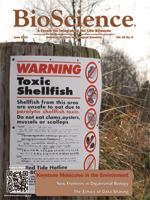Two approaches to the estimation of relative potency for dose—time—response assays are compared: the application of a generalized linear model to the dichotomized responses and survival analysis of the time to response. Survival analysis is widely used in other fields; however, its application to bioassays has been uncommon. A description of the application of survival analysis to bioassays is provided. A worked example follows, using mouse challenge assay data. This demonstrates that estimates of relative potency based on the time to response can have considerably lower variance than those based on dichotomized responses. A simulation study further supports this conclusion. Routine use of survival analysis techniques has the potential to reduce the number of animals used in bioassay trials by ensuring that the maximum value is recovered from each animal, in line with the new European Union directive on the protection of animals used for scientific purposes.
BioOne.org will be down briefly for maintenance on 13 August 2025 between 18:00-21:00 Pacific Time US. We apologize for any inconvenience.
How to translate text using browser tools
1 June 2013
Efficient Analysis of Dose-Time-Response Assays
Ann Yellowlees,
Chris S. Lebutt,
Karie J. Hirst,
Peter C. Fusco,
Kelly J. Fleetwood
ACCESS THE FULL ARTICLE
It is not available for individual sale.
This article is only available to subscribers.
It is not available for individual sale.
It is not available for individual sale.

BioScience
Vol. 63 • No. 6
June 2013
Vol. 63 • No. 6
June 2013




